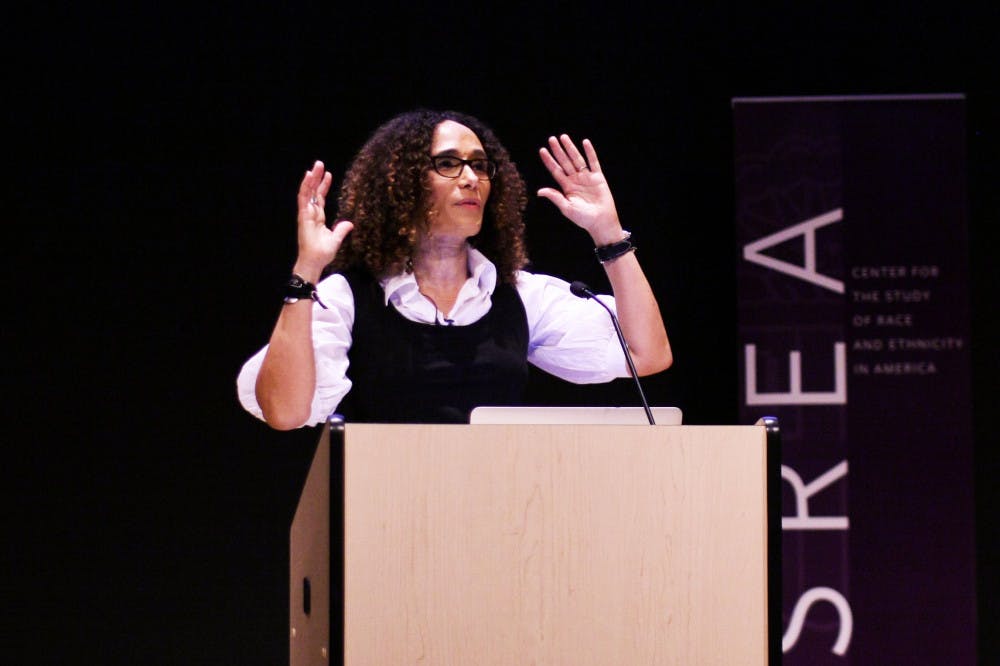Tricia Rose MA’87 PhD’93, director of the Center for the Study of Race and Ethnicity in America and professor of Africana studies, delivered the opening presentation of a series of lectures and workshops titled “How Structural Racism Works” Wednesday evening.
The series comes out of Rose’s ongoing research project, which she has been working on “for a couple of years, amidst other responsibilities,” she told The Herald. “What inspired me to do it now is partly all of the political, social issues that are going on around the country and the difficulties that people are having understanding the larger things at play.”
The project, which Rose hopes will produce a viral informational video, is “a visual, cultural and emotional project to build an anti-racist community,” she said in her lecture.
Rose said she also hopes to develop the material into a lecture course.
In the first installment of the series, Rose explained that the coming lectures will cover elements of structural racism, which she defined as the “normalization and legitimization of an array of dynamics — historical, cultural, institutional and interpersonal — that routinely advantage whites while producing cumulative and chronic adverse outcomes for people of color.”
Each lecture will focus on one of five key facets of structural racism: housing, education, mass media, wealth and jobs, and criminal justice.
Rose stressed that these five realms are not self-contained but interact with one another like cogs in a machine that is “designed to produce disparities,” she said.
“Every aspect of life has evidence of racial disparity,” Rose said.
Structural racism and its pervasiveness are obscured by the common cultural ideology of colorblindness, which “assumes racial hierarchies are not already operating,” “minimizes injustices” and “rejects policies that are designed to redress the legacy of structural discrimination,” she said.
There is a “saturating influence of the ideology of colorblindness” and an “invisibility of structural racism” that research alone cannot adequately address and disrupt, Rose said. She asked the audience, “How do we tell this story in a way that builds emotional momentum?”
The lectures and video aim to do just that, Rose said.
“She’s trying to make an emotional response … but there has to be a balance of the facts and the emotional,” said audience member Bryan Rego ’15.
“Racism is pervasive today and remains at the core of our darkest days,” said Provost Richard Locke P’17 in his opening remarks. The Office of the Provost is sponsoring the series in partnership with the CSREA.
Locke thanked and welcomed those in the packed auditorium who helped the University engage issues of racism this year.
“The presentations on the campus are a small part of a broader project,” Rose said.





